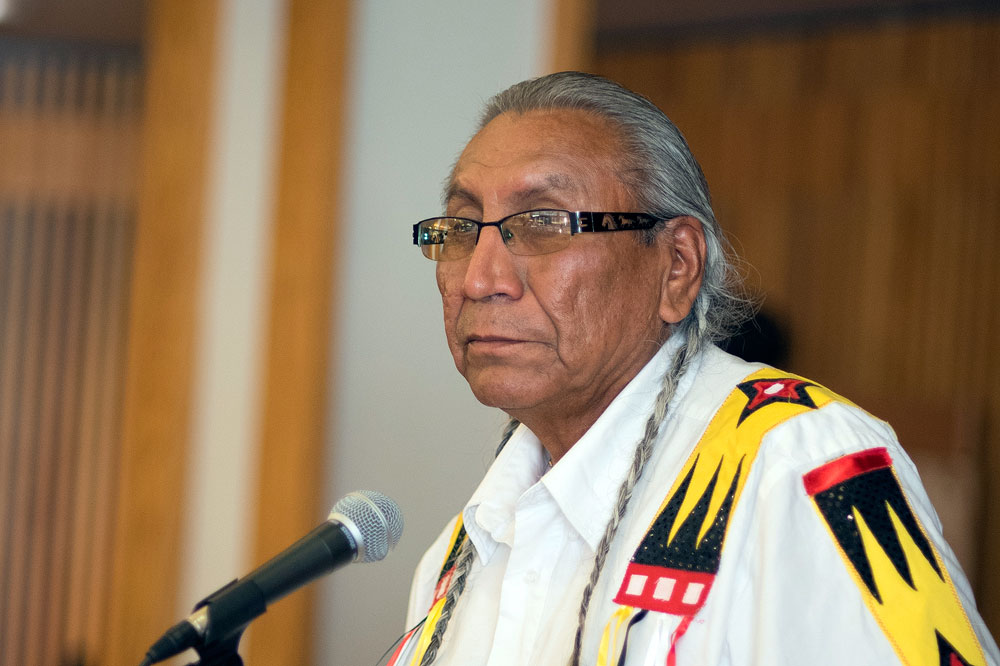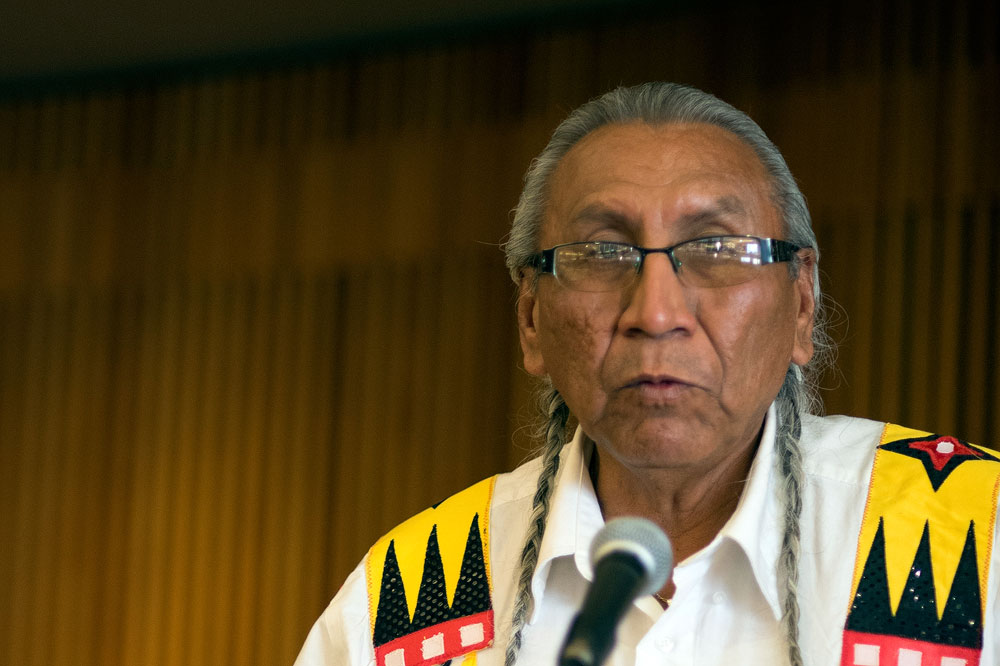
Echoes of the Sacred: The Enduring Wisdom of Sioux Spiritual Leaders
PINE RIDGE RESERVATION, South Dakota – In the vast, sweeping landscapes of the American Great Plains, where the wind whispers through the endless prairie grass and the sky stretches like an infinite canvas, lies the ancestral heartland of the Lakota, Dakota, and Nakota people – collectively known as the Sioux. More than just a collection of tribes, the Sioux are bound by a profound spiritual heritage, a worldview that intertwines every aspect of life with the sacred. At the heart of this intricate web are the spiritual leaders – the holy men and women, visionaries, healers, and wisdom keepers – who have guided their people through centuries of profound change, resistance, and renewal.
These leaders, often referred to as ‘Wichasha Wakan’ (Holy Men) or ‘Winuyan Wakan’ (Holy Women), were never mere figures of ritual. They were the interpreters of dreams, the conduits for divine guidance, the healers of body and spirit, and the moral compass for their communities. Their power stemmed not from worldly authority, but from their deep connection to Wakan Tanka, the Great Mystery, and their ability to walk in harmony with the natural world.

The Fabric of Sioux Spirituality
To understand the role of Sioux spiritual leaders, one must first grasp the essence of their belief system. It is a cosmology centered on interconnectedness: Mitakuye Oyasin – "All My Relations." This phrase encapsulates the profound understanding that all living things, the earth, the sky, and even the elements, are part of one vast, sacred family.
Ceremonies are the lifeblood of this spirituality. The Sweat Lodge (Inipi) offers purification and prayer, mimicking the womb of Mother Earth. The Vision Quest (Hanblecheya) sends individuals into the wilderness to seek guidance from the spirit world. The Sun Dance (Wiwangwachi) is the most sacred and arduous of all, a powerful sacrifice for the well-being of the people and the renewal of the earth. At the core of many of these rituals is the Sacred Pipe (Chanunpa), gifted to the Lakota by White Buffalo Calf Woman, symbolizing peace, truth, and the path to the Great Mystery.
Spiritual leaders were the custodians of these traditions. They memorized vast oral histories, understood the intricate meanings of visions and signs, and possessed the knowledge of medicinal plants and healing practices. Their wisdom was not abstract; it was intensely practical, guiding decisions from hunting expeditions to inter-tribal relations, and crucially, to moments of existential threat.
Voices of Resistance and Resilience: Historic Figures
The 19th century brought an unprecedented challenge to the Sioux way of life – the relentless westward expansion of the United States. It was during this tumultuous period that some of the most iconic Sioux spiritual leaders emerged, their spiritual insights guiding their people’s resistance.
Perhaps none embodied the fusion of spiritual and political leadership more profoundly than Tatanka Iyotake – Sitting Bull (c. 1831–1890), a Hunkpapa Lakota leader. While renowned as a warrior and strategist, Sitting Bull’s power derived significantly from his spiritual visions. Days before the Battle of the Little Bighorn in 1876, during a Sun Dance, Sitting Bull received a vision of soldiers falling upside down into his camp, a clear prophecy of the impending defeat of Custer’s Seventh Cavalry. This vision galvanized his people, providing the spiritual fortitude needed for one of the most significant Native American victories against the U.S. military. His unwavering commitment to his people’s freedom was deeply rooted in his spiritual convictions. He famously stated, "Let us put our minds together and see what life we can make for our children."
Another legendary figure, though primarily known as a warrior, was Tȟašúŋke Witkó – Crazy Horse (c. 1840–1877). A Oglala Lakota, Crazy Horse was said to be shielded by a spiritual power that made him impervious to bullets in battle. This protection was believed to stem from a profound vision he received as a young man, guiding him on how to paint himself, adorn his horse, and conduct himself in battle to remain unharmed. His spiritual discipline and self-effacing nature were as crucial to his leadership as his military prowess. He fought fiercely to preserve his people’s land and way of life, never signing a treaty, embodying a pure resistance rooted in his spiritual power.

Black Elk: A Bridge Between Worlds
While Sitting Bull and Crazy Horse represent the active resistance of the past, Heȟáka Sápa – Black Elk (1863–1950) stands as a pivotal figure who bridged the gap between the old ways and a rapidly changing world. An Oglala Lakota holy man, Black Elk witnessed the Wounded Knee Massacre in 1890, a horrific event that symbolized the end of the Plains Wars and the forced subjugation of his people.
Black Elk’s life was defined by a monumental vision he received as a boy of nine, a grand cosmic vision of the Sacred Hoop of his people and the flowering tree of life. This vision commanded him to heal his people and bring them back to the sacred path. For years, he struggled to fulfill this prophecy amidst the devastation wrought by colonization.
His story and the profound spiritual insights he carried were largely unknown to the outside world until the publication of Black Elk Speaks in 1932, a book based on interviews conducted by John G. Neihardt. Through Black Elk’s narrative, the world gained an unprecedented glimpse into the Lakota spiritual universe – the interconnectedness of all things, the power of visions, and the deep sorrow of a people whose sacred hoop had been broken.
"The first peace, which is the most important, is that which comes into the souls of men when they realize their relationship, their oneness, with the universe and all its powers, and when they realize that at the center of the universe dwells Wakan-Tanka, and that this center is really everywhere, it is within each of us," Black Elk articulated. His words resonated far beyond the reservations, becoming a foundational text for understanding Native American spirituality.
Despite the profound loss and cultural suppression he witnessed, Black Elk remained a beacon of hope and resilience. In his later years, he even embraced elements of Catholicism, seeing parallels with his own spiritual traditions, a testament to his expansive and inclusive spiritual vision. His legacy lies in his unwavering dedication to sharing the wisdom of his people, ensuring that the light of their spirituality would not be extinguished.
The Ghost Dance and its Tragic Aftermath
The late 19th century also saw the rise of the Ghost Dance, a spiritual movement that swept across many Native American tribes, offering a message of hope and renewal. While not originating with the Sioux, it found fervent adherents among them, particularly following the desperate conditions on reservations. Kicking Bear (c. 1853–1904), a Miniconjou Lakota holy man, was instrumental in spreading the Ghost Dance among the Sioux after visiting its Paiute founder, Wovoka.
The Ghost Dance promised the return of the buffalo, the disappearance of the white settlers, and the resurrection of ancestors, all through peaceful ceremonial dancing. For a people facing cultural annihilation, it was a powerful spiritual lifeline. However, the U.S. government perceived it as a threat, culminating in the tragic Wounded Knee Massacre on December 29, 1890, where hundreds of unarmed Lakota men, women, and children were killed, effectively crushing the open practice of the Ghost Dance and signaling a dark period of suppression for Native American religions.
Continuing the Sacred Path: Modern Leaders
Despite the historical trauma and concerted efforts to eradicate their spiritual practices, Sioux spirituality endured, often practiced in secret or adapted under the guise of Christian worship. Today, the flame of tradition burns brightly, carried by contemporary spiritual leaders who navigate a complex modern world.
Chief Arvol Looking Horse (b. 1954), the 19th Generation Keeper of the Sacred White Buffalo Calf Pipe Bundle, is a prominent contemporary figure. His role is not merely ceremonial; he is a global advocate for peace, environmental protection, and cultural understanding, drawing directly from the teachings of the Sacred Pipe. He often speaks on the urgency of protecting Mother Earth, echoing the ancient Lakota reverence for the land. "We are the caretakers of this land, and we must honor it," he frequently reminds audiences, emphasizing the interconnectedness that has always been central to Sioux belief.
These modern leaders work to revive ceremonies, teach the Lakota language, and educate younger generations about their heritage. They confront challenges like historical trauma, poverty, and cultural appropriation, yet they remain steadfast in their commitment to spiritual preservation. They ensure that the wisdom of Wakan Tanka continues to guide their people, not just for survival, but for thriving.
An Enduring Legacy
The Sioux spiritual leaders, from the ancient shamans to the visionaries of the Plains Wars and the pipe keepers of today, represent a profound and unbroken lineage of wisdom. Their stories are not just historical footnotes; they are living testaments to the power of faith, resilience, and the enduring human spirit. In a world increasingly disconnected from nature and spiritual roots, the lessons from the Sioux – of interconnectedness, reverence for the earth, and the pursuit of harmony – resonate with universal significance.
Their sacred fire continues to burn, lighting a path not only for the Lakota, Dakota, and Nakota people but offering a timeless message of profound wisdom to all who seek it. The echoes of the sacred continue to reverberate across the vast plains, a testament to the enduring power of a spirituality deeply woven into the fabric of life itself.


